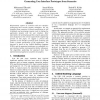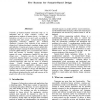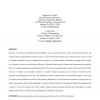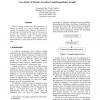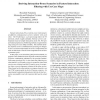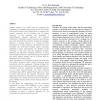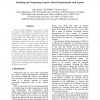RE
1999
Springer
14 years 7 months ago
1999
Springer
Requirements capture by scenarios and user interface prototyping have become popular techniques. Yet, the transition from scenarios to formal specifications is still ill-defined, ...
HICSS
1999
IEEE
14 years 7 months ago
1999
IEEE
Scenarios of human-computer interaction help us to understand and to create computer systems and applications as artifacts of human activity
ACMSE
2000
ACM
14 years 7 months ago
2000
ACM
Scenarios are narratives that illustrate future possibilities, such as proposed systems or plans, and help policy makers and designers choose among alternative courses of action. ...
IWPC
2000
IEEE
14 years 7 months ago
2000
IEEE
Software change requests are often formulated as requests to modify or to add a specific feature or concept. To implement these changes, the features or concepts must be located i...
WORDS
2002
IEEE
14 years 8 months ago
2002
IEEE
Feature interactions (FIs, in short) occur when features of different communication services interfere with each other. The FI filtering is a pre-processing before the FI detecti...
FASE
2003
Springer
14 years 8 months ago
2003
Springer
Scenarios are powerful tools to model and analyze software systems. However, since they do not provide a complete description of the system, but just some possible execution paths,...
CAISE
2003
Springer
14 years 8 months ago
2003
Springer
Scenarios that describe concrete behaviors of system play an important role in system development and in particular requirements engineering. Scenarios are informal, and are diffic...
HICSS
2003
IEEE
14 years 8 months ago
2003
IEEE
Context scenarios are widely used for assessing the robustness of strategies and policies in both the private and the public sector. Royal Dutch Shell, for instance, has become re...
RE
2004
Springer
14 years 8 months ago
2004
Springer
Scenarios and goals are effective and popular techniques for requirements definition. Validation is essential in order to ensure that they represent what stakeholders actually wan...
RE
2004
Springer
14 years 8 months ago
2004
Springer
There has been significant recent interest, within the Aspect-Oriented Software Development (AOSD) community, in representing crosscutting concerns at various stages of the softwa...
